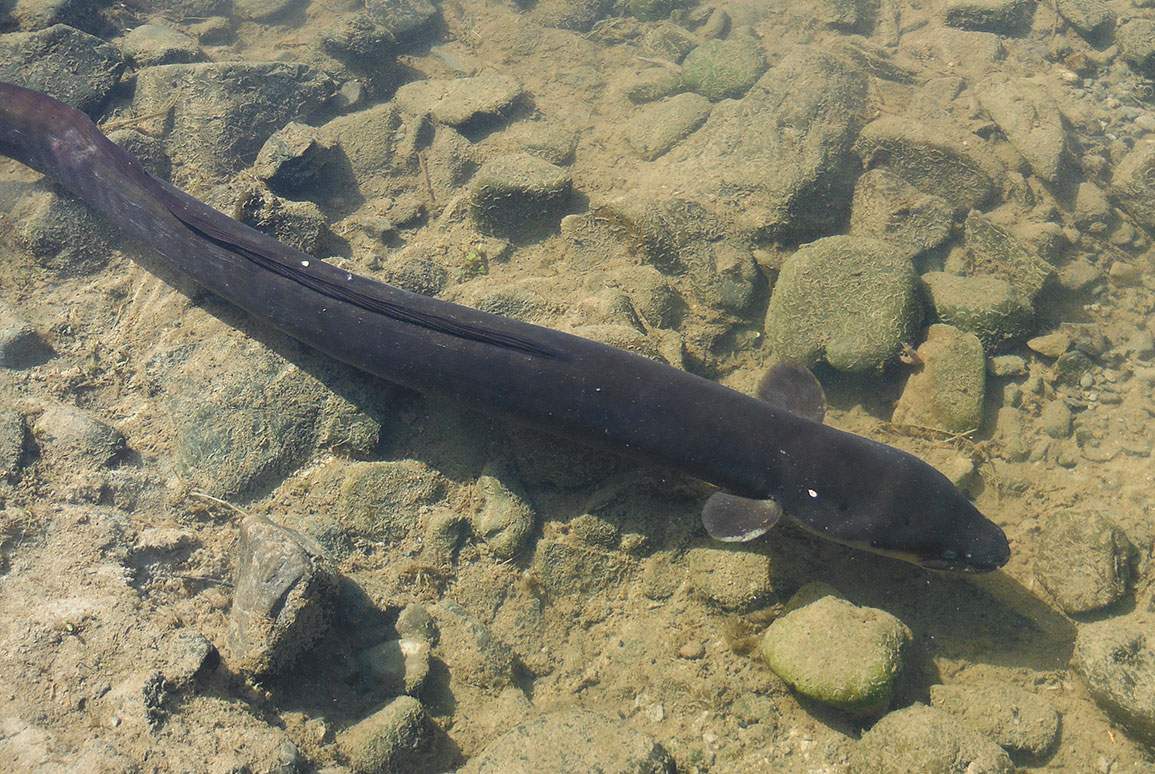Creative thinking benefits native fish
19 July 2019
Over the past year, our ecology consultants have advised HEB Construction as they have been installing stormwater system upgrades as part of Christchurch City Council’s (CCC) Land Drainage Recovery Programme (LDRP).

The Council fast-tracked this LDRP project to extend the Wigram East storage basin and provide critical flood mitigation for Christchurch’s southwest, and scheduled it at the same time as work on the neighbouring Ngā Puna Wai Sports Hub near Wigram. By doing the projects in tandem, Council was able to make efficient use of the material excavated from the basin to build up the sports hub.
Boffa Miskell was engaged to work with HEB to provide ecological advice and fish salvage for several work components. Most of these were linked to an existing stormwater system, Wigram Basin, which receives flow from Paparua Stream and urban stormwater discharges from local highways and developments.
Baseline ecological assessments completed by another consultancy, to inform the design of the stormwater system upgrades, found shortfin eels inhabiting the Wigram Basin wet pond. These eels were mostly large, with very few juveniles. This suggested that the migration of eels from Ōpāwaho / Heathcote River may have been impeded by the existing outfall structure.
During Boffa Miskell’s fish salvage from sediment removed from the edges of the wet basin, it became apparent that a reasonable population of shortfin eels, including juvenile eels, was resident in the Wigram Basin and Paparua Stream stormwater system. This indicated that juvenile eels were still managing to migrate upstream, despite the apparent barriers between Paparua Stream and Ōpāwaho / Heathcote River.
On inspection of the new outfall installed at the outlet of Paparua Stream into Ōpāwaho / Heathcote River, we found the new structure was engineered and built with an approximately 200 mm vertical drop from the culvert into the river. In addition, the outlet was designed to have riprap armouring installed – perfect for erosion control, but decidedly un-friendly for fish passage.
Unfortunately, this new connectivity barrier at the outlet of Paparua Stream left any eels, or other fish, that made their way downstream from the Wigram Basin at risk of being unable to find their way back into Ōpāwaho / Heathcote River; and, more importantly, limited their chances of migrating to the ocean to complete their lifecycles.
Recognising that the stormwater system was functionally part of the wider Paparua Stream system, and that both the stream and Wigram Basin supported a population of native fish worthy of protection, we called the client and contractor team and agreement was made to remedy the issue.
To take advantage of pumps and bunds already installed for the outfall works, and avoid costly delays, Boffa Miskell provided sketch modifications to the existing design drawings and worked with HEB staff to field-fit a solution. HEB contractors moved back a section of the riprap to create a wet inlet for the river and, working with Boffa Miskell’s ecologists, retrofitted a rough finished concrete ramp with rock baffles to slow water flows and provide plenty of texture for fish to gain safe passage to and from the river.
Project manager Dr Tanya Blakely says, "This is an excellent example of how a simple low-tech intervention can provide a valuable contribution to the wider aquatic biodiversity values of the area. Full credit to HEB and CCC staff for being willing to make the time to fix the problem amidst the pressures of finishing a multi-million-dollar project."

